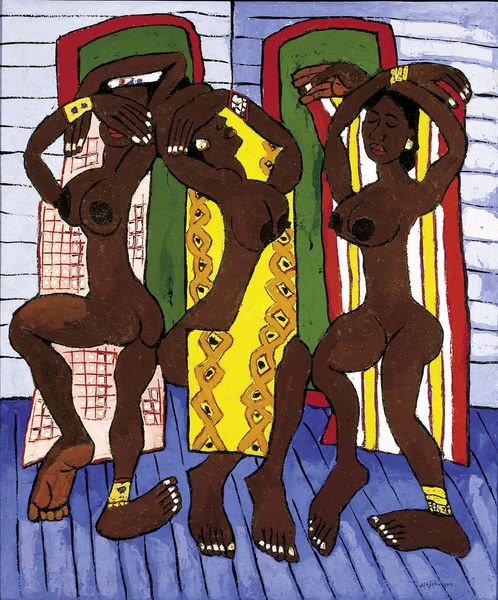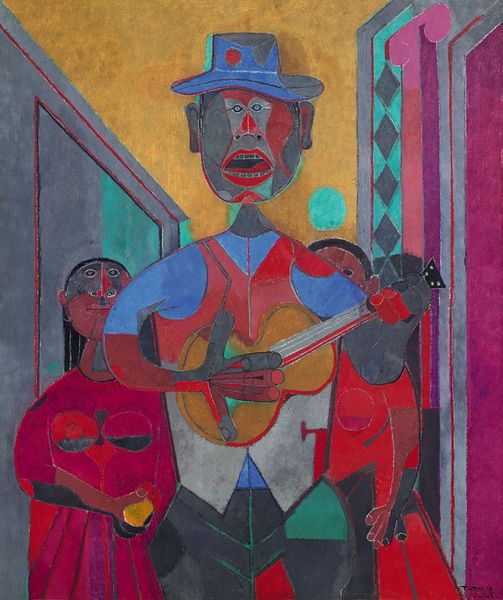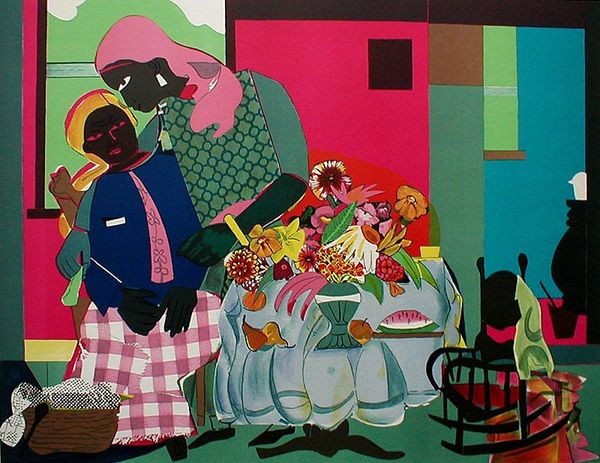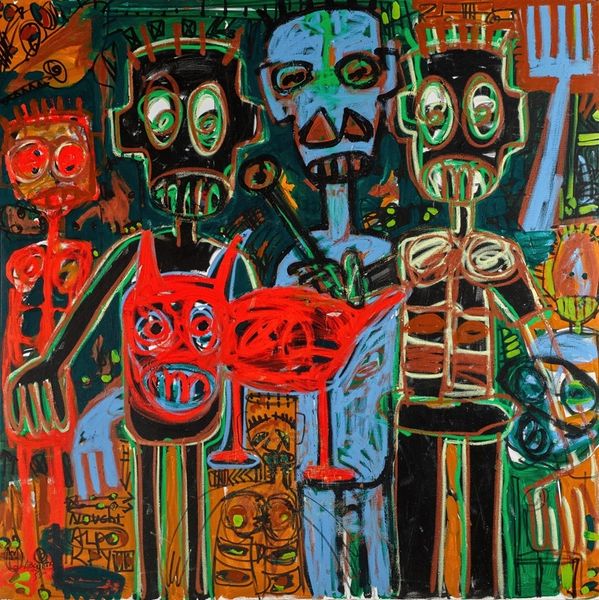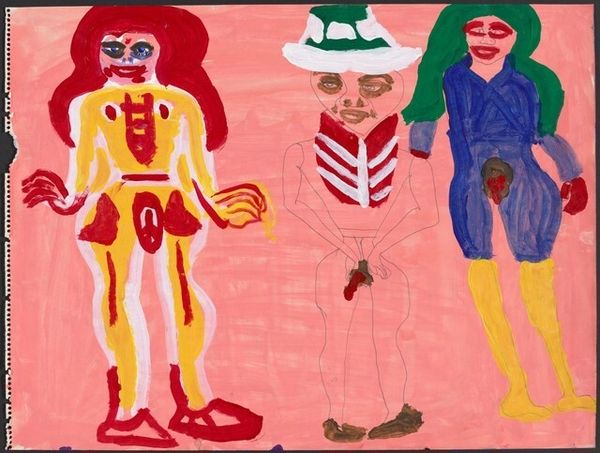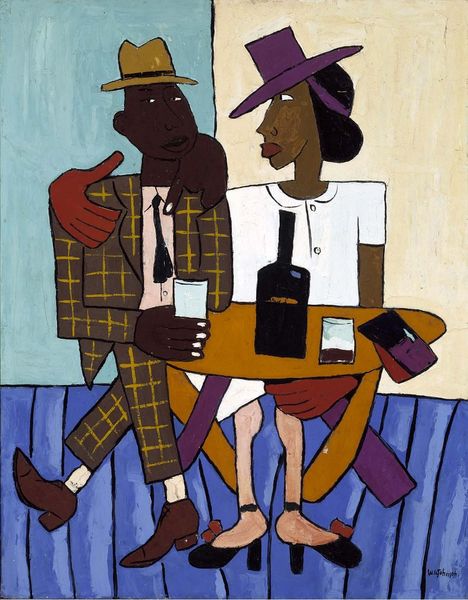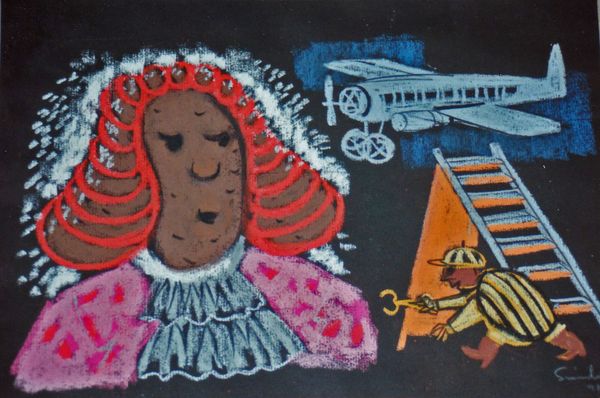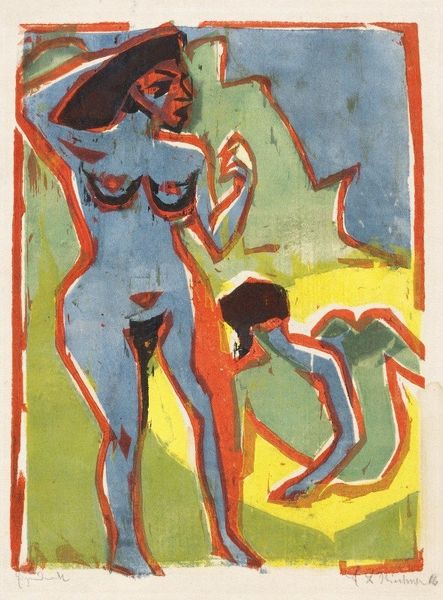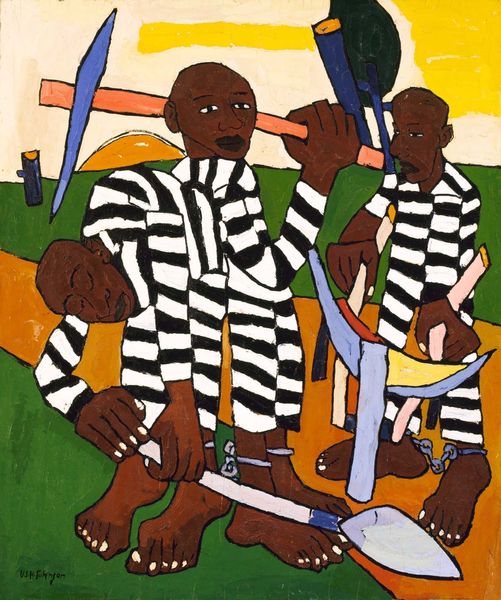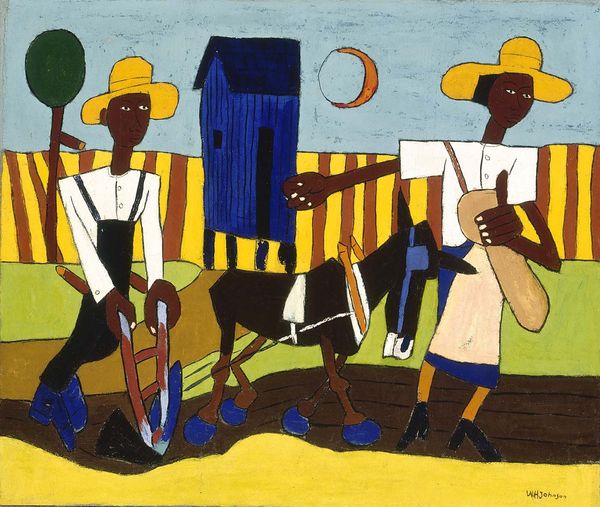
painting, oil-paint
#
portrait
#
painting
#
oil-paint
#
german-expressionism
#
figuration
#
expressionism
#
naive art
#
orientalism
Copyright: Public domain US
Editor: Emil Nolde's "The Missionary," created in 1912 using oil paints, presents such a fascinating, yet unsettling image. I'm particularly struck by the expressions on the faces – they all seem filled with such raw emotion, almost fear. What do you see in this piece? Curator: This painting powerfully exemplifies the complex dynamics of cultural exchange and the anxieties surrounding colonialism in the early 20th century. Nolde, as part of the Expressionist movement, was deeply interested in what he considered ‘primitive’ cultures. Note the figures: a missionary, rendered almost monstrously, alongside what appears to be a mother and child. How do these figures, and Nolde’s visual language, reflect the prevalent European perceptions of non-Western societies at the time? Editor: I guess the missionary's exaggerated features, and the African mask behind him, play into those exoticizing, almost demonizing stereotypes? And is it fair to assume that the mask indicates Nolde's primitivism? Curator: Exactly. Nolde was both fascinated by and complicit in the exoticism of other cultures. His art served to create or reinforce this. The formal aspects, such as the harsh colours and flattened perspectives typical of Expressionism, further amplify this unsettling contrast between the colonizer and colonized. Can you see the power imbalance visually represented? Editor: Absolutely. It’s uncomfortable to consider how European artists depicted non-Western people with their own biases. Thinking about "The Missionary" through that lens is… well, essential, but complicated. Curator: Precisely. The painting functions as a cultural artefact, a snapshot of a specific historical moment laden with socio-political implications. It forces us to confront the history of how art has been implicated in constructing, and often perpetuating, inequalities and exoticizing perceptions. Editor: I'm glad we explored it this way, considering the broader historical forces really brought a lot more insight and appreciation into this art piece. Curator: Likewise, considering both the artist's intentions and the work's later implications provides a more complete view, especially for works laden with cultural tension.
Comments
No comments
Be the first to comment and join the conversation on the ultimate creative platform.
